According to McGill University’s 2016 study, there are over 102,500 lakes and ponds in the US spread over 130,000 square miles. That’s almost like the entire country of Japan!
Such a lentic ecosystem is full of different animal species.
Besides fish, lake animals include snails, worms, turtles, frogs, minks, marsh birds, other mollusks, alligators, beavers, otters, snakes, many types of insects, and other birds.
In this article, we will show you animals that live in lakes so you can understand them better.
Table of Contents
Animals That Live In A Lake
The Great Pond Snail
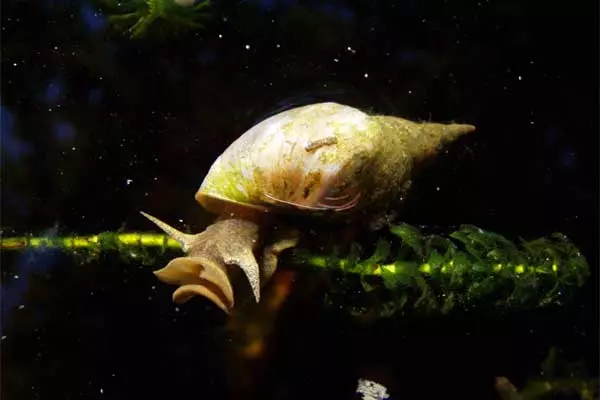
Size: 2 in
Animal Type: Snail
Found In: Europe, North America, and Asia
Diet: Omnivore
Lymnaea stagnalis, also known as the great pond snail, is a large snail that only lives in freshwaters. It inhabits ponds, lakes, and rivers rich in vegetation and can be found throughout Europe, North America, and in parts of Asia.
The great pond snail is an omnivore that eats different types of algae, insects, frog tadpoles, fish, and even other snails. It is a hermaphrodite (has both male and female sex organs) and can breathe through its skin or through a simple lung.
Besides the great pond snail, there are over 4,000 species of other snails and slugs living in ponds and lakes. These include the great ramshorn, the golden apple snail, red-rimmed Melania, the Chinese mystery snail, and many others.
The Red Worm

Size: 0.8-1.3 in
Animal Type: Worm
Found In: Widespread
Diet: Omnivore
Limnodrilus hoffmeisteri, also known as the red worm, is a small and thin worm about 0.8-1.3 inches long. It lives at the muddy bottom of ponds and lakes where it feeds on microorganisms and organic material.
The red worm is so tough it can even live in polluted waters. It also lacks an eyespot and lives from 1 to 3 years.
There are many other worm species living in ponds, lakes, and other freshwaters like the giant Gippsland earthworm, the Mekong worm, and other aquatic worms.
Mink
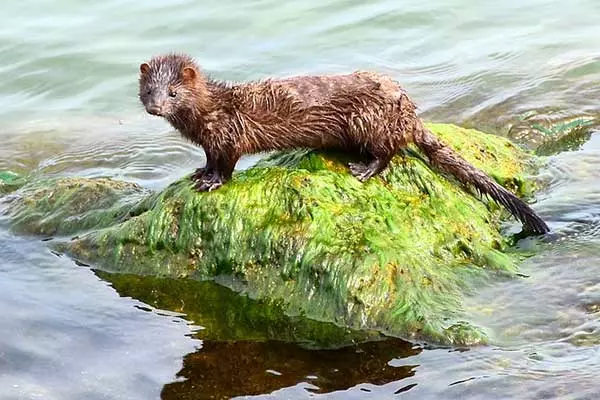
Size: 13-18 in
Animal Type: Mammal
Found In: North America and Eurasia
Diet: Carnivore
Mink is a dark-colored, semiaquatic, carnivorous animal native to North America and Eurasia. This species is associated with water; a mink likes to take shelter near streams, ponds, and lakes that have nearby tree cover.
There are two species of minks, the American and the European.
When they are happy, minks will purr. They are very skilled climbers and swimmers and like to make burrows (similar to groundhogs).
Common Snapping Turtle

Size: 8-14 in
Animal Type: Reptile (Turtle)
Found In: North America
Diet: Omnivore
The common snapping turtle is a large turtle that weighs up to 35 pounds and has a long tail, chunky head, and large webbed feet. It only lives in marshes, lakes, ponds, rivers, and slow streams with muddy bottoms and lots of vegetation so it can hide better.
The common snapping turtle has a very strong bite and eats almost anything it can find (plants, insects, spiders, worms, fish, frogs, small turtles, snakes, birds, and even carcasses).
Alligator Snapping Turtle

Size: 29 in
Animal Type: Reptile (Turtle)
Found In: USA
Diet: Carnivorous
The alligator snapping turtle is a very intimidating-looking turtle. It is one of the heaviest freshwater turtles in the world that lives in rivers, lakes, and backwater swamps of North America.
Alligator snapping turtle can be found only in the USA. It is not a very aggressive species. This turtle will not even hunt prey; it will keep its mouth open, wiggle its worm-like tongue appendage to lure other fish, and then swallow its meal.
The American Bullfrog

Size: 8 in
Animal Type: Amphibian (Frog)
Found In: North America
Diet: Carnivore
The American bullfrog, also known as the bullfrog, is a large frog native to North America that inhabits areas in the U.S. Nova Scotia, and Mexico.
This aquatic amphibian likes to live in still, shallow waters, like those found at the edges of lakes and ponds.
Female bullfrogs are larger than males and people enjoy eating their legs. Bullfrog lives up to 9 years in the wild and when the cold weather comes, it digs down into the mud to hibernate.
American Eel
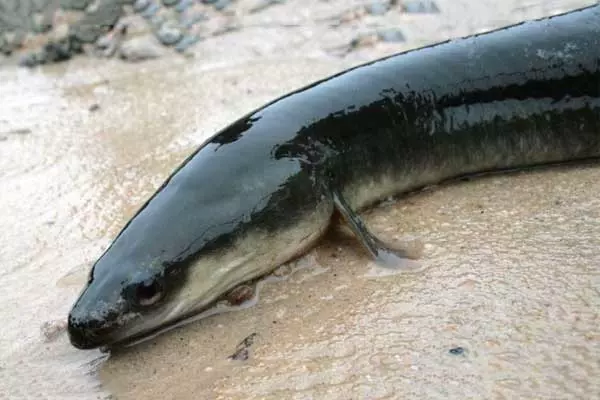
Size: 20 in
Animal Type: Fish
Found In: North America
Diet: Carnivore
The American eel is a yellow to greenish-brown catadromous eel that has a slender, snake-like body covered with an oozy layer. Catadromous means that it migrates from freshwater to sea to breed.
It is the only species of freshwater eel that can be found in North America. American eel has a strong tolerance to different temperatures and salinities, and besides ocean water, can be found in freshwater lakes and ponds.
The oldest American eel was 43 years old; the species can grow up to 60 inches and are considered a delicacy in Europe and Asia. The eel feeds on insects, fish, fish eggs, crabs, worms, clams, and even frogs.
Lake Sturgeon

Size: 7 ft
Animal Type: Fish
Found In: North America
Diet: Carnivore
The lake sturgeon, also known as the rock sturgeon, is the oldest and largest native fish in North America’s Great Lakes. It usually lives in lakes and ponds, at depths of 15-30 feet and can grow over 300 pounds.
Despite its intimidating looks, the lake sturgeon is a docile fish. It feeds on larvae, crayfish, snails, clams, and leeches, and likes to live in sand or gravel at the bottom of a lake.
Sterlet
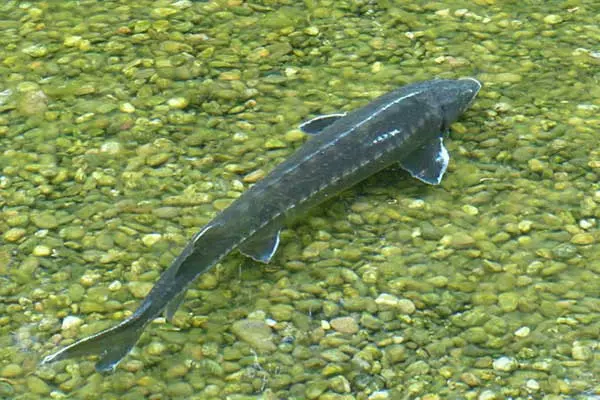
Size: 40-50 in
Animal Type: Fish
Found In: Europe and Asia
Diet: Carnivore
The sterlet is a small fish that is native to eastern Europe and western Asia. It is a freshwater species that can be found in rivers and ponds.
The sterlet can live between 22 and 25 years and it is said to produce some of the best kinds of caviar. When it’s mating time, females may lay over 40,000 eggs.
Lake Trout

Size: 50 in
Animal Type: Fish
Found In: North America
Diet: Carnivore
Lake trout, also known as mackinaw or togue, is a big, fork-tailed trout living in the lakes of Canada and the northern U.S. It is very valued for food and as a game fish.
Most lake trout, as their name suggests, live in deep lakes.
It is the largest of the freshwater char and can live from 25 to 40 years. Some lake trout even reach 60 years of age! It mostly feeds on shrimps, insects, fish, and plankton.
Tiger Salamander
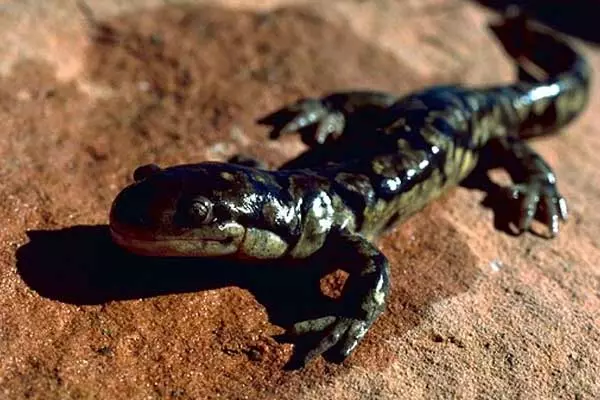
Size: 6-8 in
Animal Type: Amphibian
Found In: North America
Diet: Carnivore
Tiger salamander is a large North American salamander that is black and has yellow/greenish patches on its body. It lives in deep burrows two feet below the surface, close to ponds, lakes, or slow-moving streams.
Tiger salamanders live up to 16 years in the wild, perhaps because of their ability to hide underground from predators like badgers, snakes, bobcats, and owls. They feed on worms, snails, slugs, and insects.
Axolotl

Size: 12 in
Animal Type: Amphibian
Found In: Mexico
Diet: Carnivore
Axolotl, also known as the Mexican walking fish, is a salamander species related to the tiger salamander. It lives in lakes and ponds of Mexico and remains in its larvae form its entire life.
Axolotl, unlike many other salamander species, lives permanently in water. The only place it can be found is Lake Xochimilco in southern Mexico City.
Despite their cute and interesting looks, they will eat almost anything. Axolotls eat fish, worms, insects, and crustaceans.
The axolotl is critically endangered; scientists estimate that between 50 and 1,000 of these animals currently exist.
Plain-Bellied Water Snake
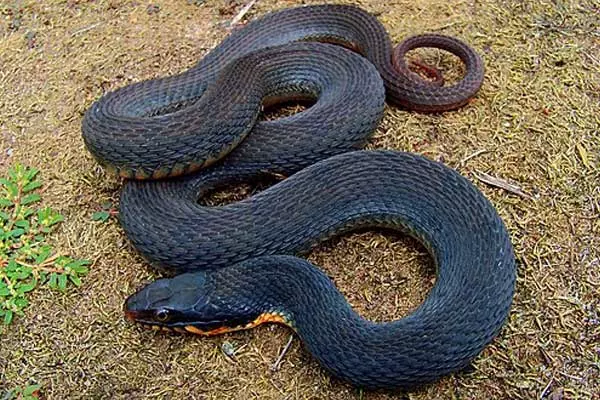
Size: 24-40 in
Animal Type: Reptile (Snake)
Found In: United States
Diet: Carnivore
A plain-bellied water snake is a nonvenomous snake living in water areas in the United States. It can be found near many wetlands, lakes, and ponds.
Plain-bellied snake got its name because of no pattern on its bottom side which can be yellow, brown, red, or green. It is an excellent swimmer and is not a venomous snake. It will still defend itself if feeling threatened.
Cottonmouth Snake

Size: 32-42 in
Animal Type: Reptile (Snake)
Found In: United States
Diet: Carnivore
Cottonmouth, also known as the water moccasin, is a dangerous and venomous snake that inhabits the southeastern U.S. It prefers staying in ecosystems like briny lakes and ponds.
Cottonmouth snake got its name for the white color inside its mouth. It is not a typically aggressive snake, but it will defend itself if provoked. If you encounter one, the best would be to back off.
Cottonmouth snake feeds on frogs, fish, smaller snakes (even other cottonmouths), small water birds, and small mammals.
American Alligator
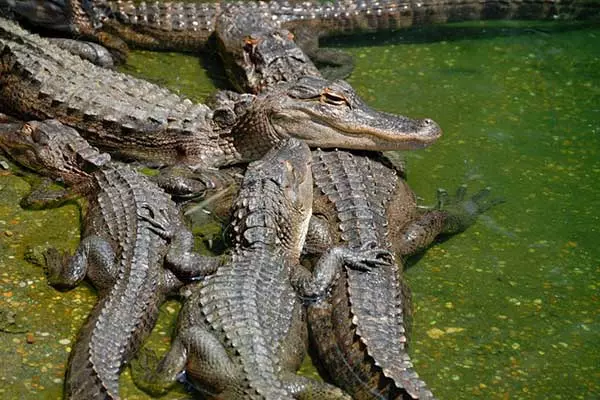
Size: 10-15 ft
Animal Type: Reptile (Crocodile)
Found In: United States
Diet: Carnivore
The American alligator, also known as the common alligator, is a large reptile native to the Southeastern United States. It is similar to a crocodile but has a wider and shorter head.
The American alligator can be found in freshwater swamps, marshes, and lakes. It lives 30-50 years and can weigh up to 1,200 pounds.
American alligators are apex predators, they do not have natural predators, and feed on fish, amphibians, reptiles, birds, and even mammals.
Mugger Crocodile
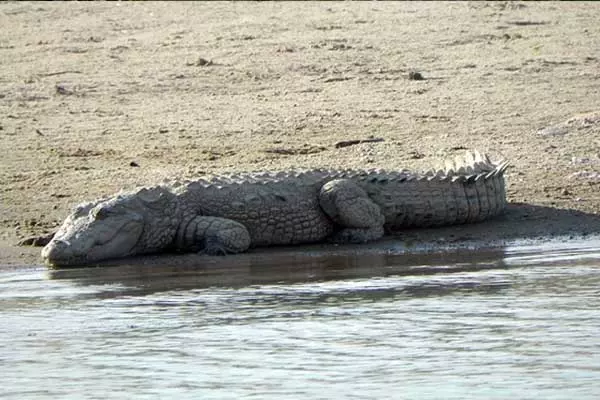
Size: 10 ft
Animal Type: Reptile (Crocodile)
Found In: Indian Subcontinent
Diet: Carnivore
The mugger crocodile, also known as the marsh crocodile, is a medium-sized reptile that lives in marshes, lakes, rivers, and artificial ponds of Iran, Pakistan, northern India, and Nepal.
It got its name from the Urdu word “magar” which means “water monster”.
The mugger crocodile is covered with rough skin and scales. It feeds on fish, snakes, turtles, birds, and mammals like monkeys, squirrels, rodents, otters, and even dogs.
Males are known as bulls, while the mugger crocodile females are known as cows.
Common Moorhen

Size: 12-15 in
Animal Type: Bird
Found In: Widespread
Diet: Omnivore
Common moorhen, also known as the waterhen or swamp chicken, is a medium-sized aquatic bird that belongs to the rail family. It lives near marshes, ponds, canals, and other wetlands rich in vegetation.
It lives between 18 and 19 years and when a female is ready to mate it will make a murmur call.
Read More: List of birds that have forked tails
Mallard

Size: 20-26 in
Animal Type: Bird
Found In: North and South America, Europe, Asia, Africa
Diet: Omnivore
Mallard is a large duck and the ancestor of nearly all domestic duck breeds. It can be found near shallow ponds and lakes. They are easy to recognize as males have dark green heads and white collars.
A male Mallard is called a drake and a female is a hen. Mallards fly fast and swim well – they have a 3 ft wide wingspan. They eat plants and small fish, insects, frogs, and fish eggs.
Swan
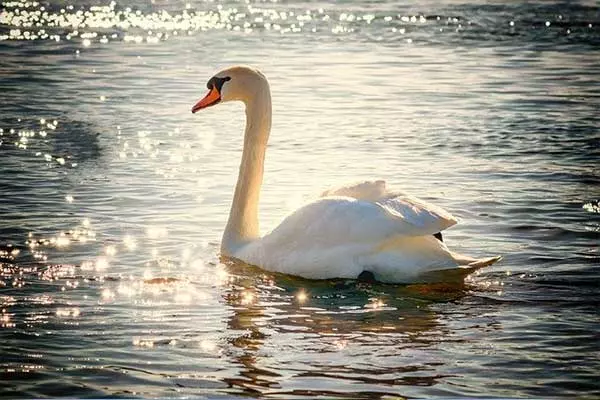
Size: up to 59 in
Animal Type: Bird
Found In: Europe, Asia, Africa, North America, Australia
Diet: Herbivore
Swans are large water birds that have long and flexible necks, short legs, webbed feet, and are mostly white in color. They are waterfowl which means that they spend most of their lives near water, on a lake, or in a river.
Swans are closely related to geese and ducks. They mate for life but if the marriage fails, the swan will find another partner. There are around 6-7 species of swans.
They mostly feed on water plants, grasses, algae, insects, and mollusks.
Read More: 30+ birds with orange beaks!
Vampire Crab

Size: 2 in
Animal Type: Crustacean (Crab)
Found In: Indonesia
Diet: Omnivore
The vampire crab, also known as Geosesarma, is a small freshwater crab. In the wild, it can be found near lakes that are rich in vegetation.
Vampire crabs aren’t picky eaters; they will eat crickets, grasshoppers, earthworms, mealworms, woodlice, springtails, worms, and plants.
Vampire crabs got their name because of their glowing yellow eyes.
There are over 1300 species of freshwater crabs; many of them can be found near lakes and ponds.
Rusty Crayfish

Size: 3-5 in
Animal Type: Crustacean (Crayfish)
Found In: United States
Diet: Omnivore
The rusty crayfish is a large, aggressive species of freshwater crayfish that can be found in the US. It lives near permanent waters like lakes with lots of rocks and trees.
Rusty crayfish is an omnivore that feeds on fish eggs, small fish, aquatic invertebrates, and various plants.
Opossum Shrimp
Size: 0.4-1.2 in
Animal Type: Crustacean (Shrimp)
Found In: /
Diet: Omnivore
Opossum shrimp is a small shrimplike crustacean with a long body and prominent eyes. It is usually transparent. These shrimps mostly live in marine waters, but some can be found in lakes.
Opossum shrimps are omnivores and feed on algae, detritus, and zooplankton.
You can see how they look in the water here.
Mayfly
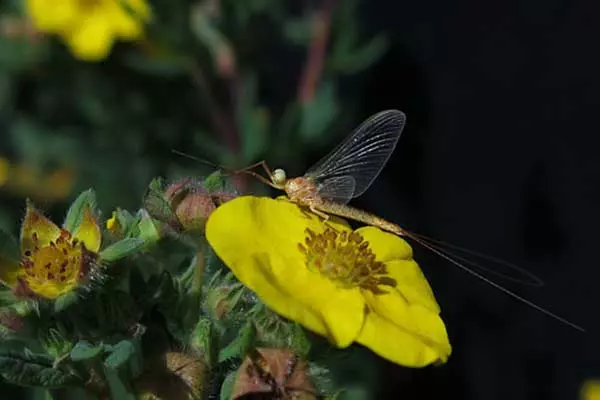
Size: 0.25-1 in
Animal Type: Insect
Found In: Worldwide
Diet: Herbivore
A mayfly is an aquatic insect with transparent wings and two or three long filaments on the tail. Some mayflies can be found in still waters and around the edges of lakes.
Mayflies have an extremely short lifespan – from a few minutes to a few days only.
They can be used as indicators of water pollution; if there are no mayflies around, the water is polluted – mayflies only live in clean waters.
Want to see more aquatic fish with funny-looking bodies and foreheads.
Final Thoughts
This concludes our article on the main animals found in lakes.
Lakes are large water areas rich in plants and animals. There are different zooplankton, crustaceans (crabs, crayfish, and shrimp), mollusks (clams and snails), and numerous types of insects found in lakes.
Many types of fish, amphibians (salamanders and frogs), reptiles (snakes, turtles, and alligators), and a large number of waterfowl species inhabit the lake ecosystem, as well.
Photo Sources:
- Common Snapping Turtle – Ontley, Public domain, via Wikimedia Commons (edited)
- The Red Worm – Yale Peabody Museum of Natural History, CC0, via Wikimedia Commons (edited)
- American Eel – Clinton & Charles Robertson from RAF Lakenheath, UK & San Marcos, TX, USA & UK, CC BY 2.0 https://creativecommons.org/licenses/by/2.0, via Wikimedia Commons (edited)
- Lake Trout – U.S. Fish and Wildlife Service, Public domain, via Wikimedia Commons (edited)
- Tiger Salamander – Stolz Gary M, U.S. Fish and Wildlife Service, Public domain, via Wikimedia Commons (edited)
- Plain-bellied water snake – Peter Paplanus from St. Louis, Missouri, CC BY 2.0 https://creativecommons.org/licenses/by/2.0, via Wikimedia Commons (edited)
- Cottonmouth snake – Pattavina Pete, U.S. Fish and Wildlife Service, Public domain, via Wikimedia Commons (edited)
- Vampire Crab – Eumeldingens, CC BY 3.0 https://creativecommons.org/licenses/by/3.0, via Wikimedia Commons (edited)
- Rusty Crayfish – https://commons.wikimedia.org/wiki/File:Dale_Westaby_Orconectes_Rusticus.jpg (edited)